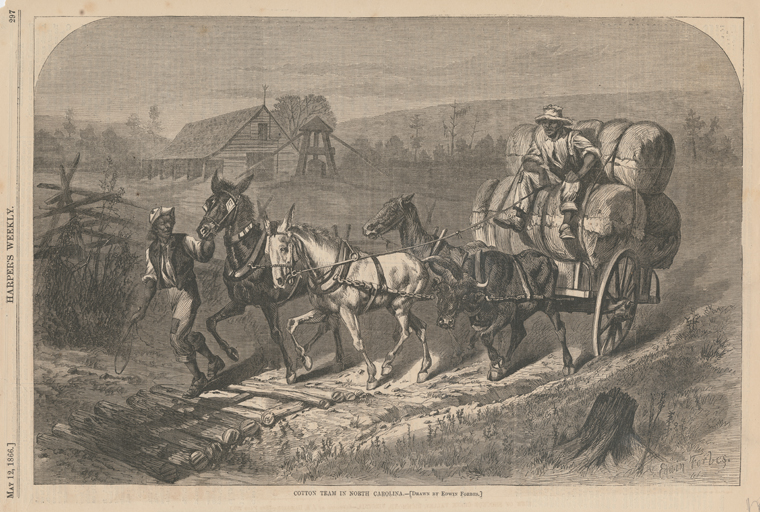See also: The Way We Lived in North Carolina: Introduction; Part I: Natives and Newcomers, North Carolina before 1770; Part II: An Independent People, North Carolina, 1770-1820; Part III: Close to the Land, North Carolina, 1820-1870; Part IV: The Quest for Progress, North Carolina 1870-1920; Part V: Express Lanes and Country Roads, North Carolina 1920-2001

North Carolinians of the nineteenth century dwelt in an agrarian world. This series of articles, Close to the Land, details the lives of antebellum Carolinians from the tobacco field to the grist mill, the courthouse to the schoolyard, and the camp-meeting arbor to the enslaved peoples' quarters.
The farm, whether of ten acres or ten thousand, was the basic unit of economic production and social organization in antebellum North Carolina. The Tar Heel town, whether port city or backcountry village, was intrinsically tied to agriculture. Even budding industry and improved transportation facilities were essentially the outgrowth of efforts to process agricultural products and to reach markets efficiently. Although war and industrial expansion were to revolutionize society and transform the economy, the state's continued commitment to agriculture linked North Carolina with its rural traditions.
Contents
North Carolina in the Victorian Era
Rural Community
Town Life and Enterprise
Forces for Change